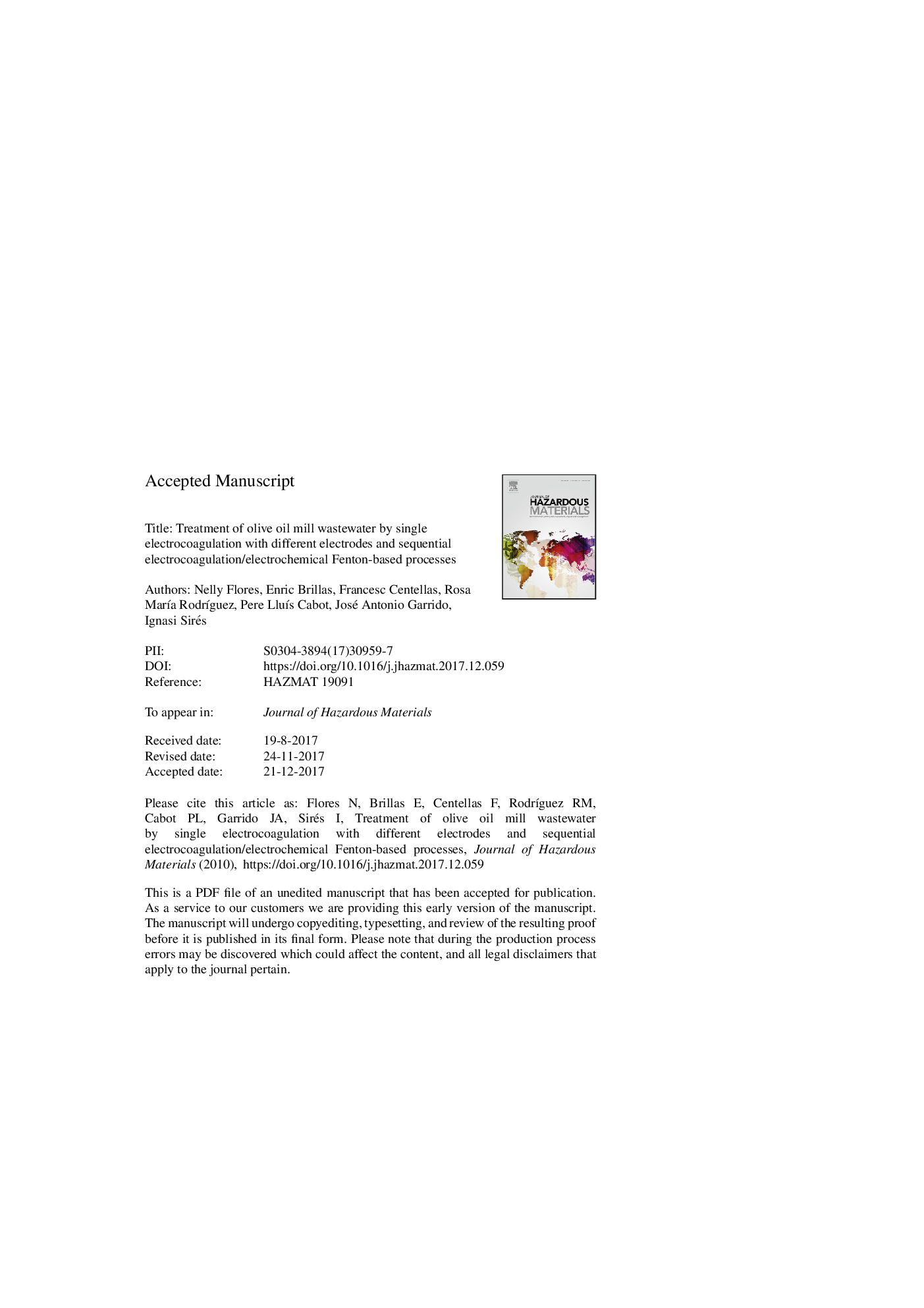| Article ID | Journal | Published Year | Pages | File Type |
|---|---|---|---|---|
| 6968989 | Journal of Hazardous Materials | 2018 | 35 Pages |
Abstract
The treatment of olive oil mill wastewater (OOMW) by novel sequential processes involving electrocoagulation (EC) followed by electro-Fenton (EF) or photoelectro-Fenton (PEF) under UVA irradiation has been studied using a boron-doped diamond anode and an air-diffusion cathode for H2O2 electrogeneration. Their performance was monitored from the removal of total organic carbon (TOC), chemical oxygen demand, turbidity, total solids and total nitrogen, as well as from the energy consumption. Preliminary EC assays were performed with one pair of electrodes made of Al, Fe, AISI 304 or AISI 316L. The Fe/Fe cell showed the best performance, yielding 40% TOC decay in 20â¯min. Subsequent EF or PEF at natural pH 7.2 performed similarly, whereas PEF became superior at pH 3.0 due to the action of UVA photons. Comparison between EC/PEF and single EF or PEF at pH 3.0 and 25â¯mA cmâ2 with 0.50â¯mM Fe2+ revealed the positive outcome of the sequential process, attaining 97.1% TOC abatement after 600â¯min. GC-MS analysis of the raw wastewater allowed identifying 18 cyclic and 27 aliphatic compounds, most of which could not be removed by EC. The final solutions in EC/EF and EC/PEF contained a large plethora of persistent long-chain aliphatic acids and alkanes.
Keywords
Related Topics
Physical Sciences and Engineering
Chemical Engineering
Chemical Health and Safety
Authors
Nelly Flores, Enric Brillas, Francesc Centellas, Rosa MarÃa RodrÃguez, Pere LluÃs Cabot, José Antonio Garrido, Ignasi Sirés,
